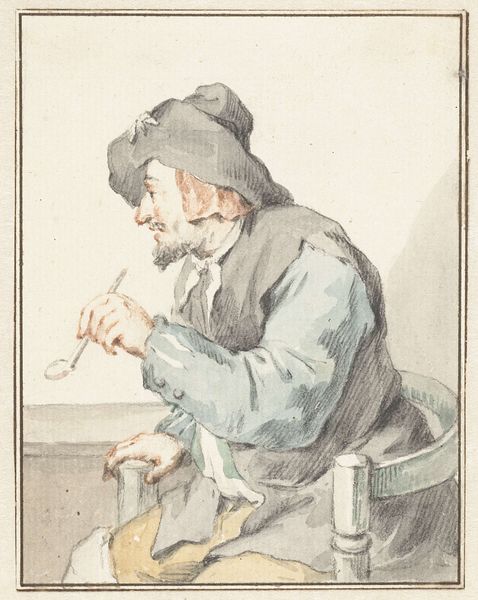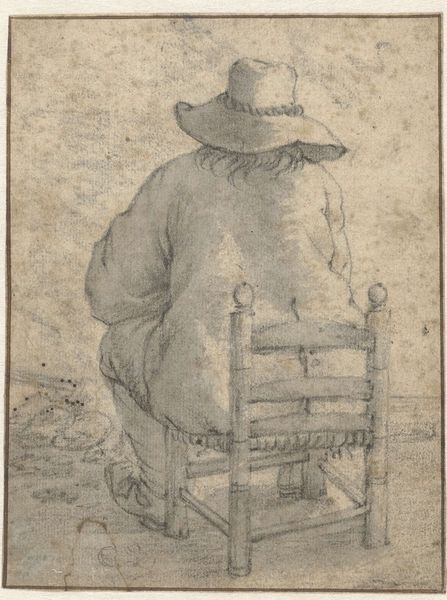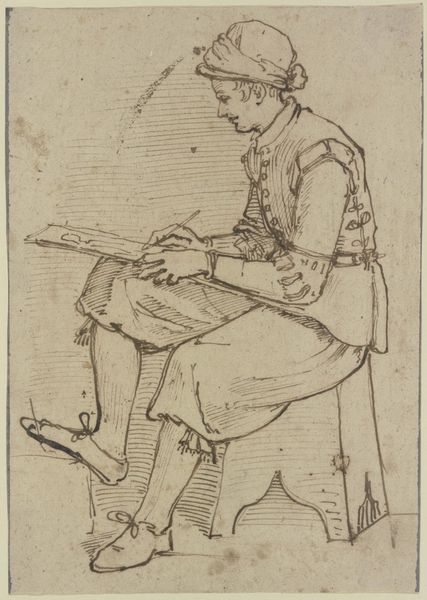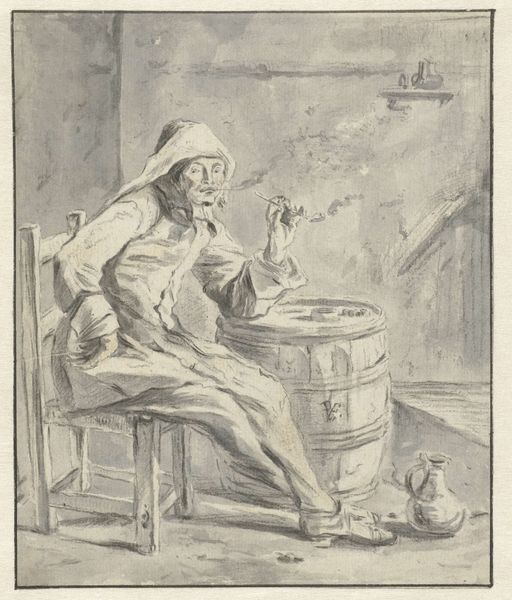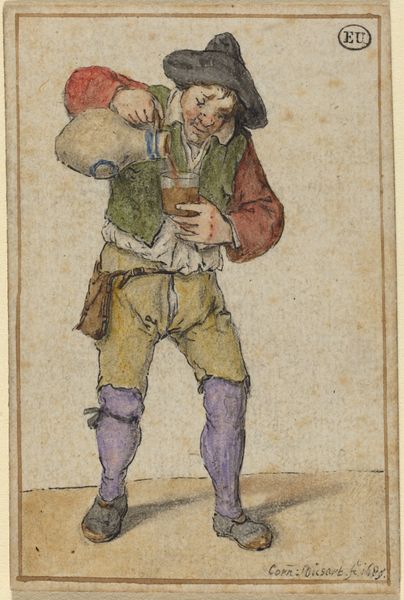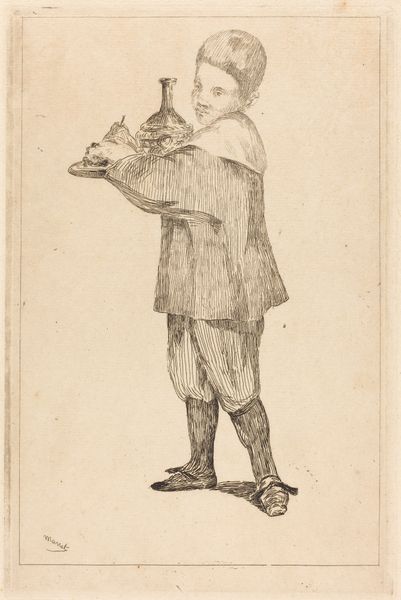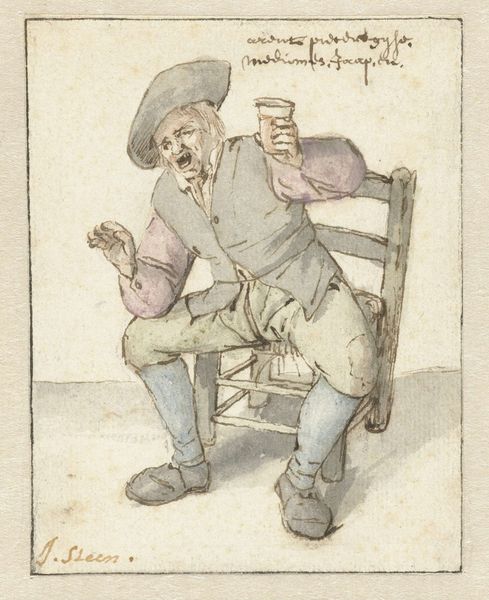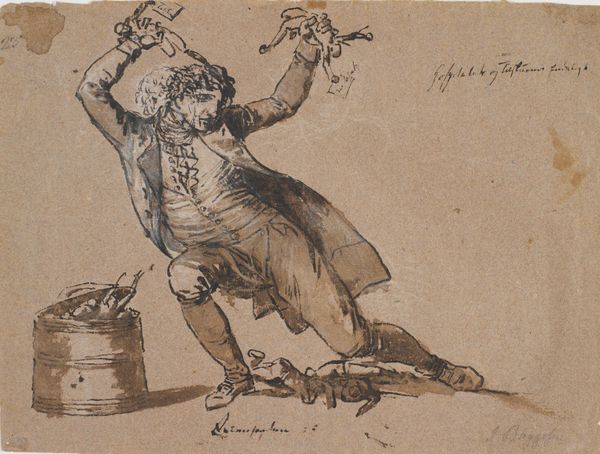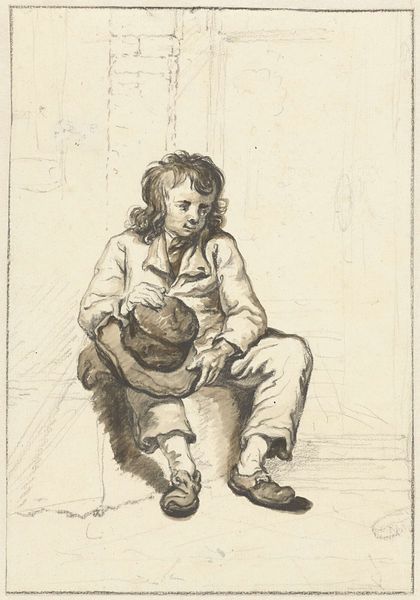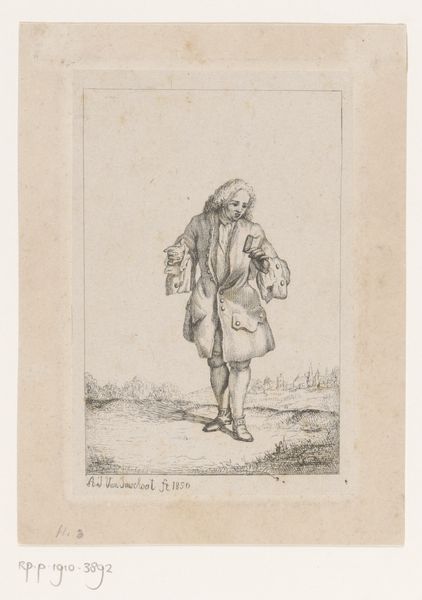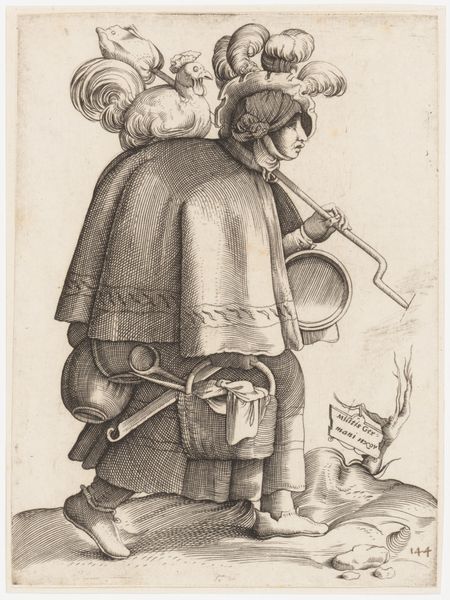
drawing, coloured-pencil, watercolor
#
portrait
#
drawing
#
coloured-pencil
#
narrative-art
#
dutch-golden-age
#
watercolor
#
coloured pencil
#
genre-painting
#
watercolor
Dimensions: overall (approximate): 8.6 x 5.7 cm (3 3/8 x 2 1/4 in.)
Copyright: National Gallery of Art: CC0 1.0
Curator: Cornelis Dusart, a Dutch Golden Age artist, created this intriguing piece titled "Peasant Smoking" in 1689, employing colored pencil and watercolor. It is a fascinating window into a specific social reality. Editor: It's striking how casually powerful it is. There’s a relaxed, almost weary energy to this figure, a silent narrative hanging in the air with the smoke. You can almost smell that tobacco and feel the rough texture of his clothes. Curator: The piece is quite relevant because it is from a period where genre painting became extremely popular. We have here a visual record, maybe idealized, of Dutch peasant life that really speaks about representation of class. Consider his clothes: they tell a story. What kind of commentary do you feel the work is doing, either on class, Dutch identity, or contemporary events of the time? Editor: He almost seems to be making fun of the upper crust without overtly doing it, like the wink you give someone at a party across a crowded room when a particularly pretentious pronouncement is being made. Look at the nonchalance. And is that a knife by his side? You see how society views manual work through this, right? Curator: That is interesting; let's talk about his portrayal. Dusart positions him so his gaze is down and to the side. What does that choice of composition say about power structures during this era? There may be, you know, multiple ways to interpret this depending on your philosophy and point of view. Editor: The downward gaze, the comfortable slouch... he's clearly a man rooted in his environment, confident in his own skin, and unconcerned with courtly pretenses. There’s something defiant in that utter lack of affectation. He is in his element; his expression seems to suggest his environment suits him fine. He may just feel very happy in this moment. Curator: This also aligns with contemporary discussions on masculinity and social roles. Genre paintings often played a part in defining these notions. This one shows how these types are observed, yes, but how were these characters actually living? Were these accurate reflections, or were these artists imposing stereotypes on their subject matter? Editor: It reminds me that in those days, the simplest pleasures—a smoke, a drink—were truly savored because life itself was harder. Curator: Yes, it offers us so much insight on labor, class consciousness and representation in art. Editor: Absolutely!
Comments
No comments
Be the first to comment and join the conversation on the ultimate creative platform.
